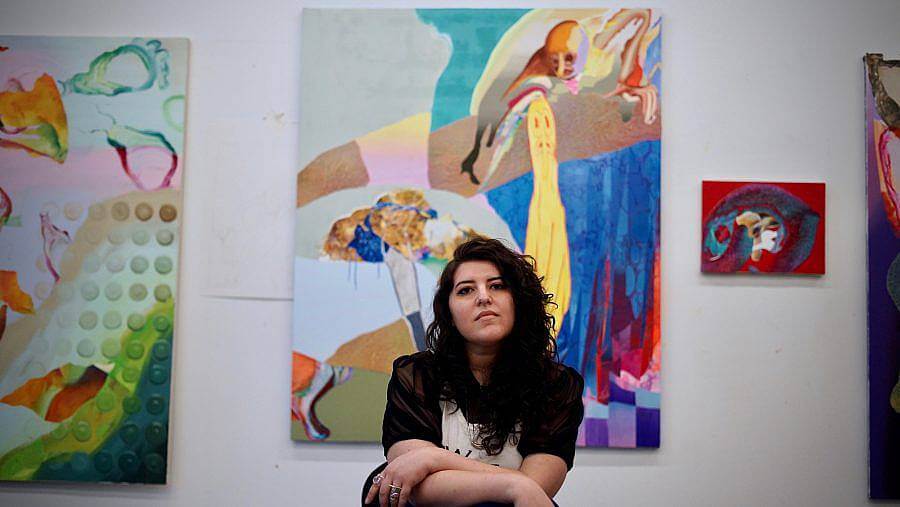You’ve worked the Marimonda figure, an image often associated with Carnival from your hometown of Barranquilla, into your recent paintings from 2020. Can you discuss the significance of it as a cultural symbol? As one of protest?
The marimonda is the sort of figurehead of the Colombian carnival, omnipresent throughout the country as a representation of the festive spirit of us costeños, the people of the coast. Though its meaning has changed in recent decades as it was incorporated and became the figurehead of the carnival, the origin of the costume is said to come from the 1800s as a means of mocking an oppressive social elite. The mask is said to be a combination of a primate and an elephant and worn with an oversized suit and tie. I am interested most in this origin story and the use of the exaggerated body as a form of mockery and mockery as a form of protest. We can locate in that a very queer history of exaggerating the body and taking up space beyond imposed and oppressive boundaries as forms of resistance and protest.
Can you discuss your use of exaggerated and abstracted bodies to explore queer subjectivity?
Negotiated within queer subjectivity are the simultaneous experiences of erasure, incompatibility, invisibility, and shame in our early understanding of the boundaries imposed on us. This deeply informs how (and why) many of us take up space in the world. The bodies in my paintings are paths that constantly queer and reroute themselves, reconfiguring as acts of resistance, regaining power, and arriving at a kind of divine state through their abjection.
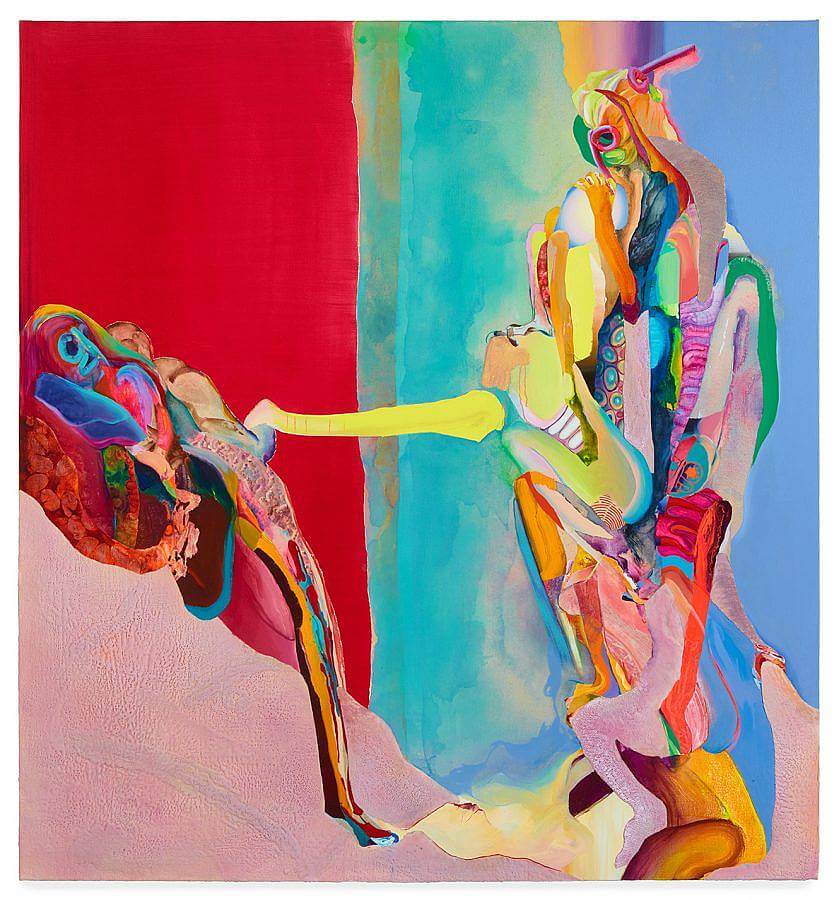
What is the manipulation and exaggeration of the body, or skin upon the train tracks, in “Marimonda en Reposo” meant to convey?
I like to think that this figure is oscillating between being the body and being the costume, the outfit, or the skin that contains the body. But nothing about the figures in my work can ever be true without also being untrue, and it is in that ambiguity that I am most at ease. This piece is inspired by moments in cartoons where bodies are boneless, organless, and impossibly elastic when they are meant to express trauma of any kind, which is so strangely palatable and grotesque at the same time. This body is dissolving and camouflaging into its environment implying an impending incoming threat. (Very) loosely, it considers both the power and the powerlessness inherent in invisibility.
What is your interest in juxtaposing more organic forms with artificial or architectural ones?
In the simplest answer, one emphasizes the other. But it is also very much about creating figures that don’t exist independently of each other or their environment. Recognizing that power dynamics can be propelled externally and internally at once and imagining that all bodies are constantly reconfiguring to locate their own power.
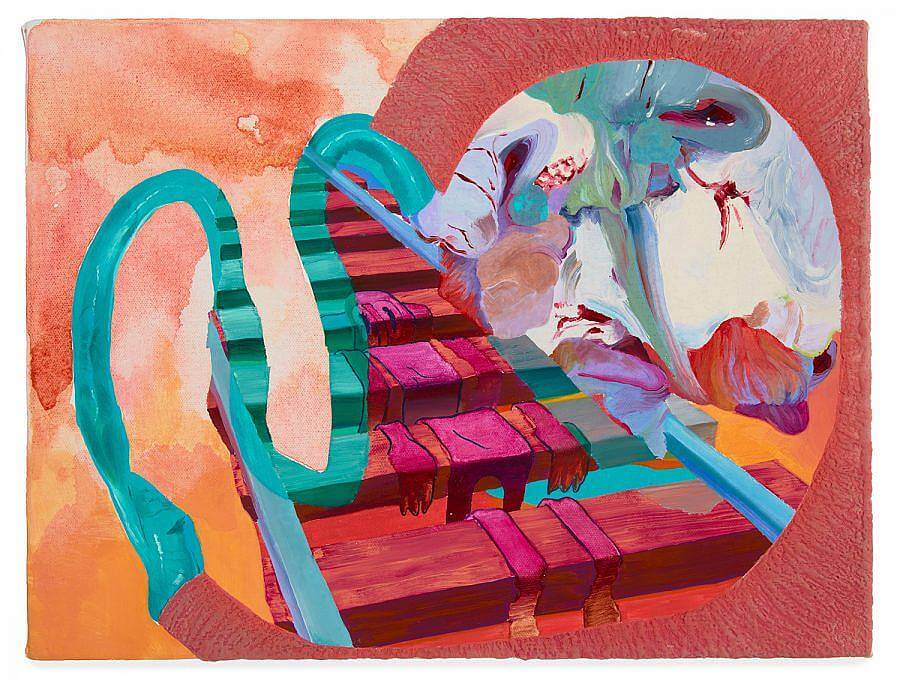
Though your works are painted with oil, acrylic, and beeswax, many of their compositions bear resemblance to digital paintings and collage, what roles, if any, do digital tools play in your process?
I usually work on a sketch by hand first and then bring it into photoshop where I then undo a lot of the decisions my hand made, where I can disintegrate the drawing and leave room for paint to make decisions. To a degree, the digital space is where the rules of physicality are suspended and where I fall into a surrealist realm with greater ease.
Can you discuss your process of using beeswax to create texture and dimension?
For a while, I’ve been interested in materials that congeal a gesture by beginning to dry before the gesture is completely applied and beeswax behaves like that. By building it up into a texture it both exposes and disguises my hand. Like excess unraveling truth. I like the way wax is reminiscent of different parts of the interior and exterior body, that it is literally a material the body creates on its own, and this texture invites touch with both a seductive and repulsive cadence.
How has living in New York impacted your practice?
We all know this by now but New York has become a city that no longer welcomes artists, we have to contend with the fact of confined spaces, and that only lends itself to a certain kind of work. That said, now that I’ve been away for 9 months, I can’t underestimate the impact of not having access to a concentration of art as often as I do in NY. Since the pandemic started we’ve all had very little access to art beyond the screen and often it can feel like I’m cannibalizing my own work.
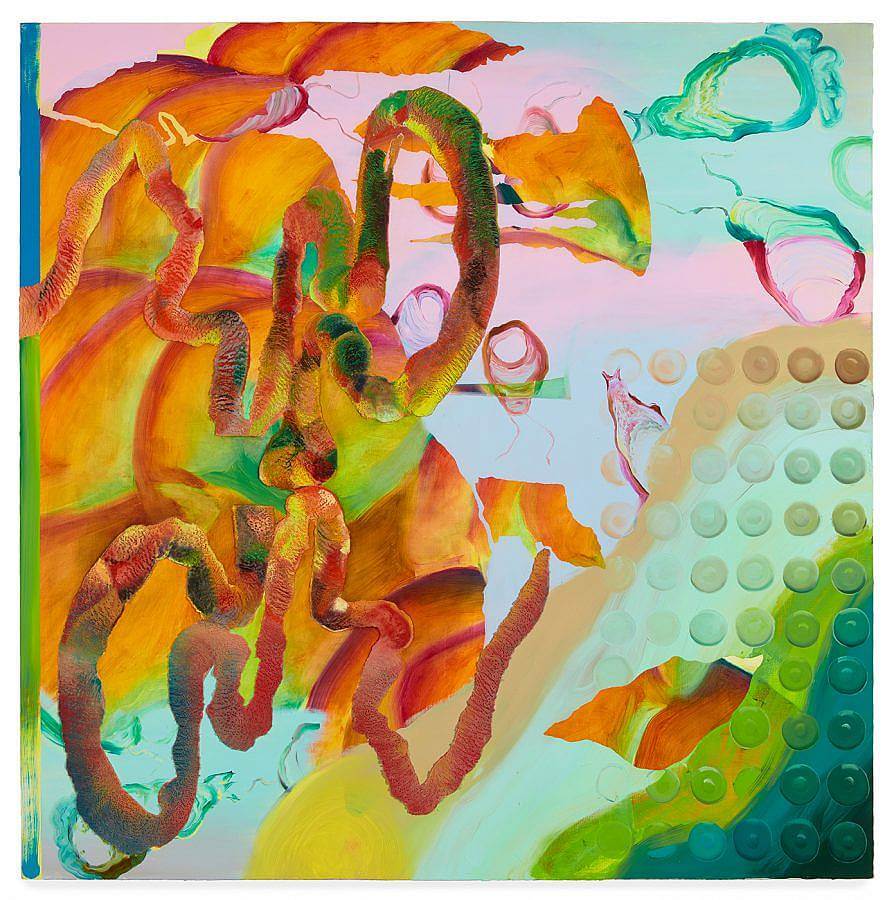
In “Marimonda desplegada (Marimonda unmasked),” the multiple figures are portrayed with contrasting moods, positions of power, and illustration styles, what are you unmasking here?
I can’t really say I know exactly what I’m unmasking, but I know it is the deploying, displaying, unsticking of a kind of armor, something that serves to protect and/or disguise. There is no one overwhelming style of painting in this piece that dictates what is othered here, what holds more power than the rest.
What social relationships are important for you to portray with your works?
I think the most important relationships are between the authoritarian and the obedient, but that extends to the interior and exterior body and the physical self as it relates to memory.
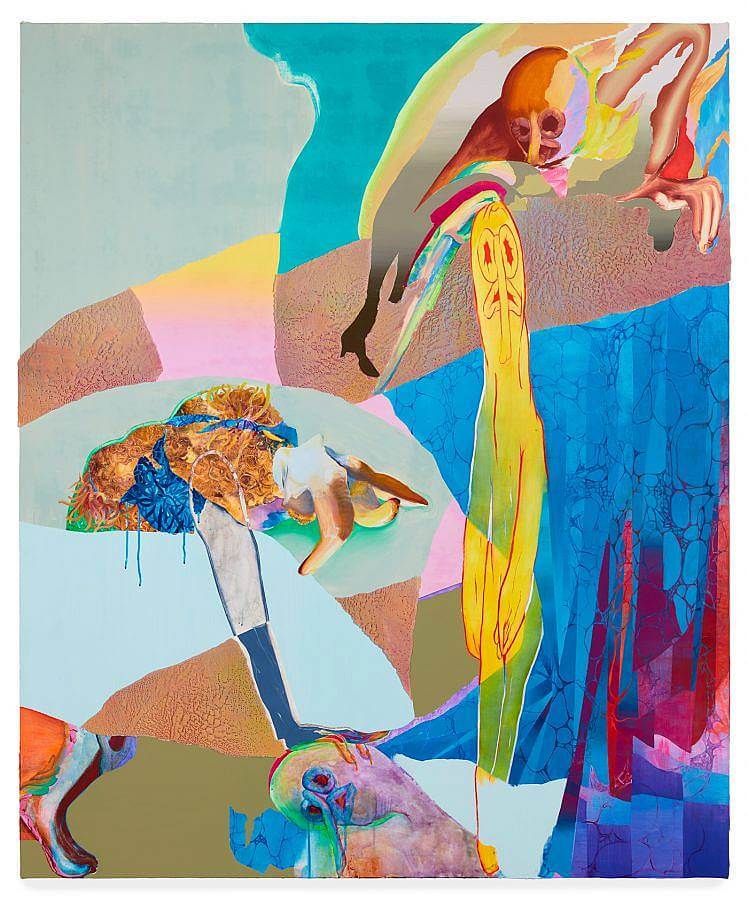
Has Covid-19 impacted your practice, and if so how?
Of course. I can’t imagine anyone has gone unaffected by this, it’s almost that universality that makes this so impactful. I can bring all different kinds of people into my studio and trust that we are all thinking about touch, intimacy, power, and loss to varying degrees. We are experiencing a kind of mass submission to these microscopic particles that have subdued the world and the scale shift in that power is so interesting to me.
Is there any significance to the colors you use in your paintings?
I like to think of the colors in my work as a perversion through abundance. I hope that they both seduce and repel, and force a kind of confrontation of that contradiction. To overwhelm through the uncanny. I like the power I have as a painter to make you not be able to look away, however much you might want to.
Do you have any upcoming projects or shows?
For the moment I’m focusing on a solo show I’ll be having at Deli Gallery in February.
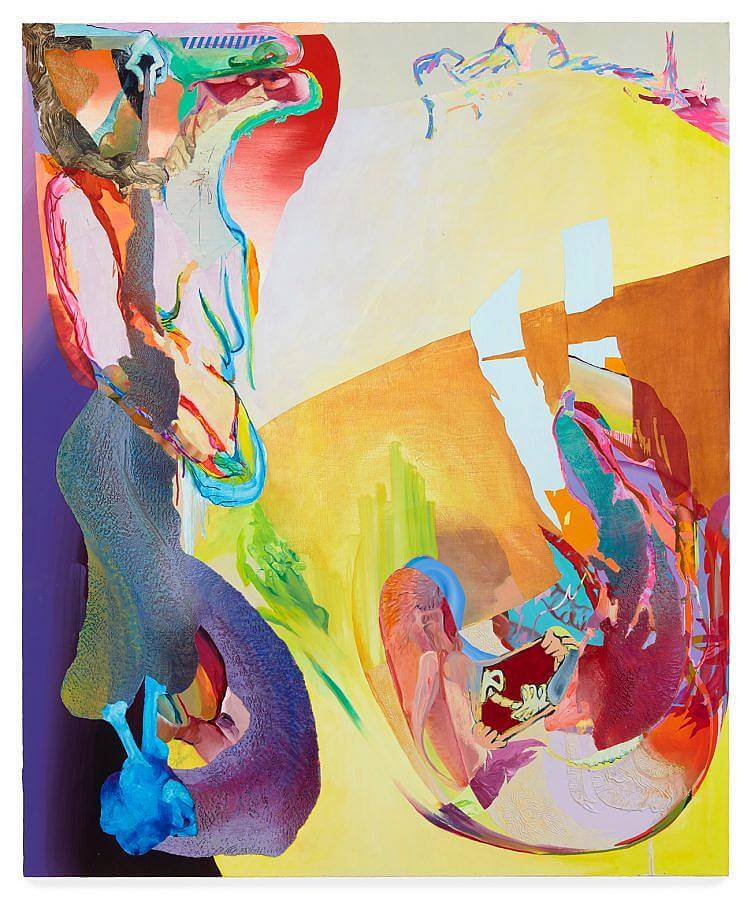
Interview composed by Amanda Roach.
